The Best Elephant Sanctuary in Thailand
Hey there! This post may contain affiliate links, which means I’ll receive a commission if you purchase through my link, at no extra cost to you. Please see my legal page for more details.
This is my story of visiting what I think is the best elephant sanctuary in Thailand. This post describes exactly how to visit elephants in Chiang Mai ethically!
Elephanting Ethically
Before I went to the Elephant Nature Park just outside of Chiang Mai, when I thought about my dream trip to Thailand, I pictured splashing in a river while bathing a grateful elephant. But I learned…
Don’t bathe the elephants. And please, for the love of all things wild, don’t ride an elephant in Thailand, or anywhere.
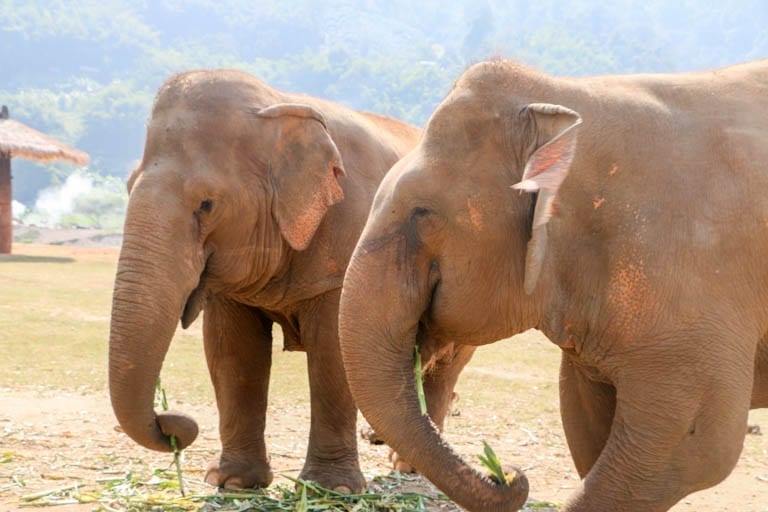
Before I visited an ethical elephant sanctuary in northern Thailand, I didn’t realize just how terribly elephants are treated when they are kept for the purpose of tourism. I didn’t know how to visit elephants in Thailand without harming them.
According to a 2017 study by World Animal Protection, more than 75 percent of elephants used for tourism in Asia are kept in cruel conditions. Yet riding elephants still remains one of the most popular tourist attractions in Asia.
Please know that all is not lost, your Thailand travel dream is still possible. There is a way to visit elephants ethically. Let’s go to the best elephant sanctuary in Thailand!
A Powerful Visit to The Elephant Nature Park
The van pulled up to the Elephant Nature Park just outside of Chiang Mai and disgorged six sweaty strangers. Not one of us had any idea what to expect from an overnight trip to an elephant sanctuary, and not one of us knew that, in just 24 hours, we would leave the park forever changed – and forever friends.

I hurried to keep up with Jenn, a 28-year-old hospital social worker turned world traveler, as our guide swept us out of the van and along a shaded patio marked with painted red lines. I almost crashed right into my new friend when she stopped short upon rounding a corner.
Peering around Jenn, I saw that we were face-to-face with elephants, who politely reached their long trunks toward baskets of bananas lined up behind that red line.
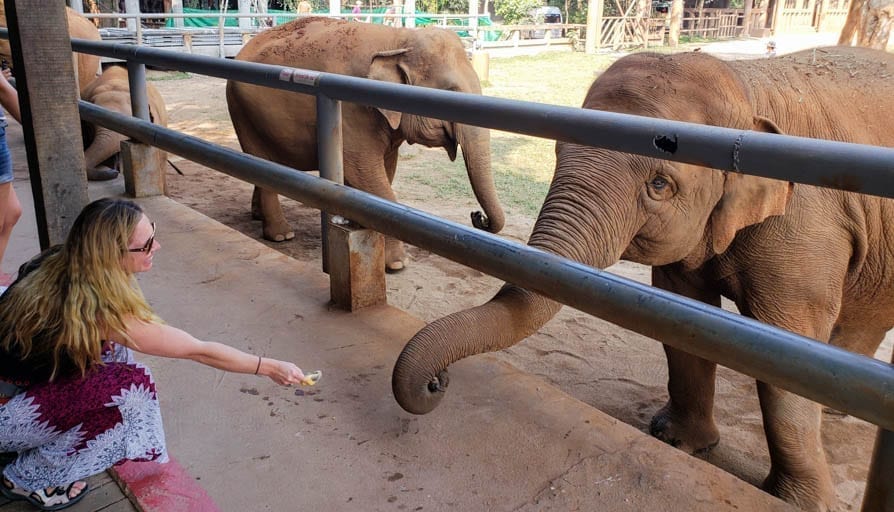
The elephants were pretty clear about what they wanted us to do (give them those bananas!) but we were all very cautious with our first elephant encounters, tentatively nudging the bananas forward, but leaning our bodies backward.
Minutes later, we embarked on our first guided walk around the park, handing our cameras to one another and keeping a careful distance from the elephants.
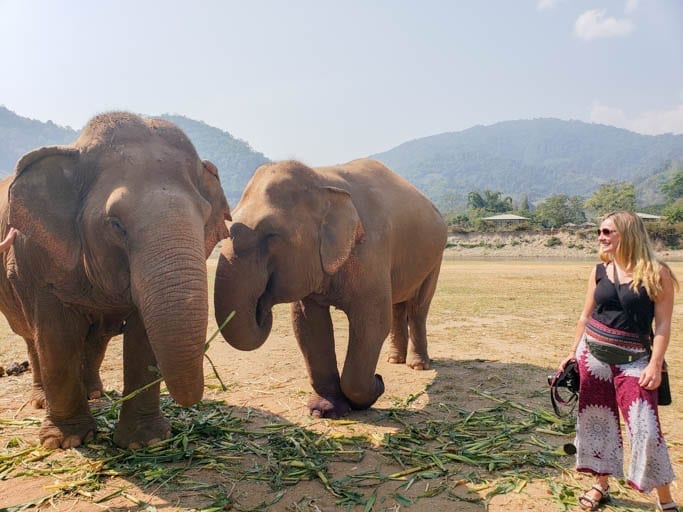
By contrast, the next morning, we would laugh together as we carried totes full of bananas and watermelons across a marsh and up a hill, joyfully snatching each other’s cameras and phones to snap pictures when we encountered two elephants waiting patiently for their breakfast.
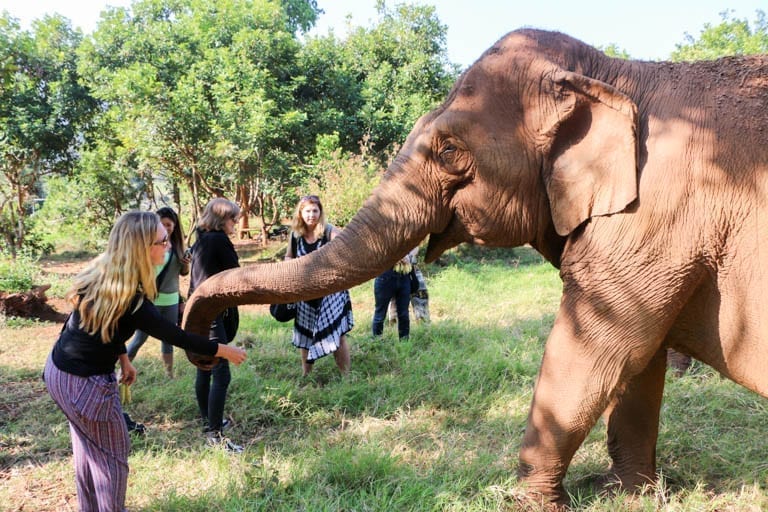
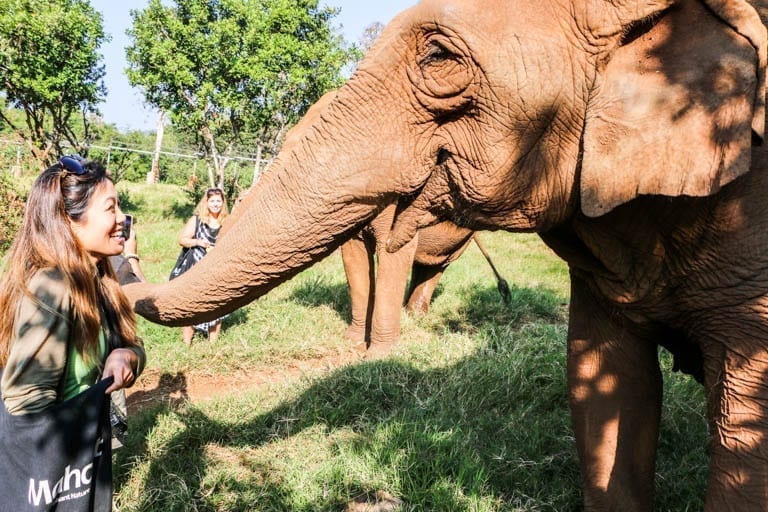
Learning at the Elephant Nature Park: an elephant sanctuary
But that first morning, we still had much to learn about each other and even more to learn about how to elephant ethically.
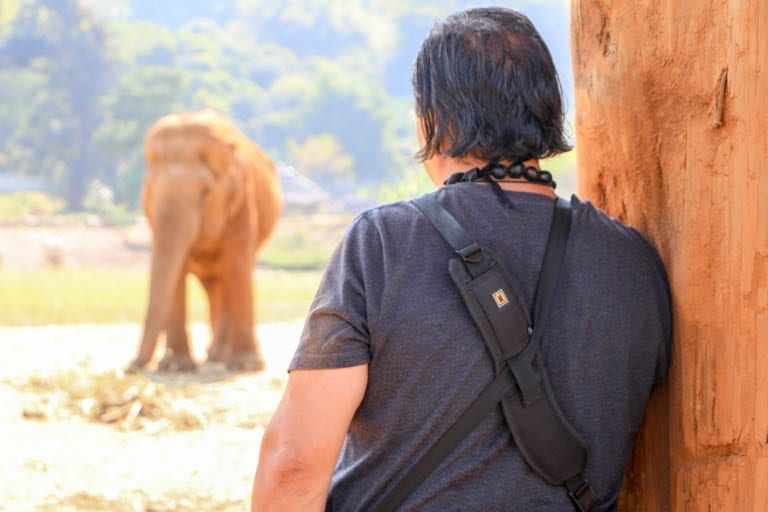
We quickly noticed that the elephants we were visiting were clearly happy. But there was something else. They were also old and, often, damaged.
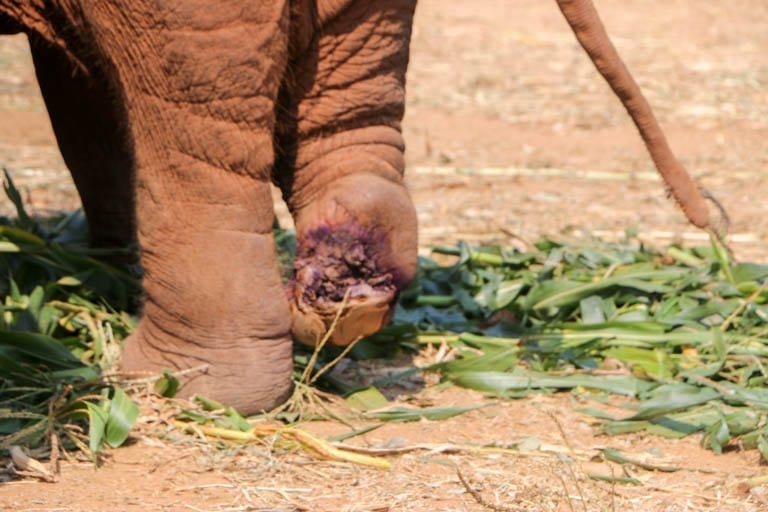
Volunteers and handlers were spread about the park, caring for elephants who had stepped on landmines while hauling logs, or elephants who were blinded from beatings received while hauling tourists.
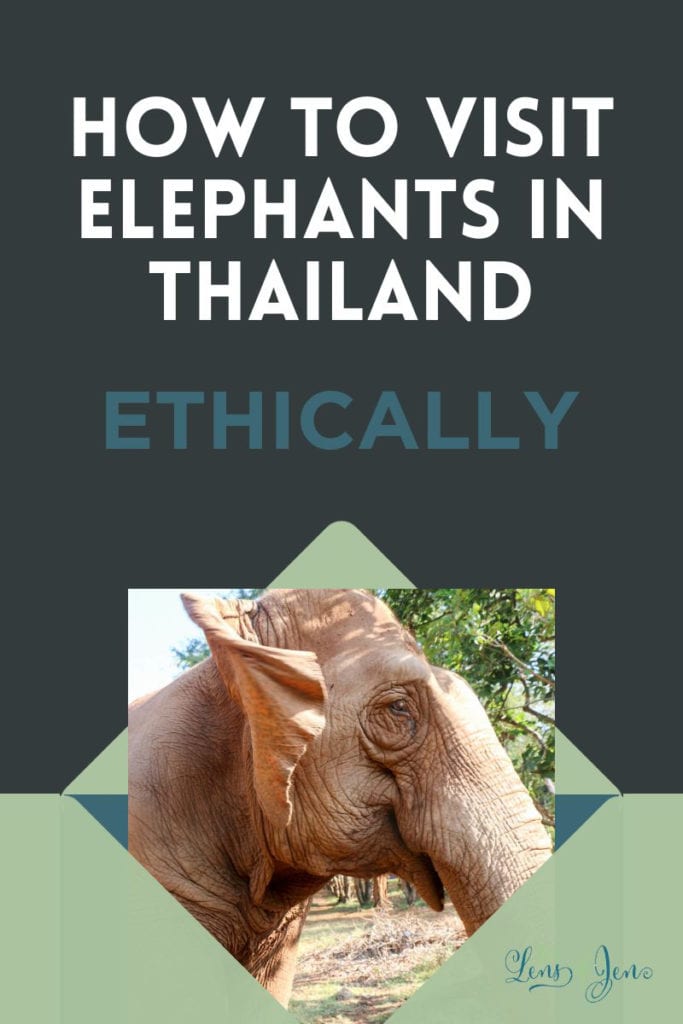
Ethical elephant sanctuaries like the Elephant Nature Park purchase wounded and older elephants who are less valuable to the logging and tourism industries for two primary reasons:
reasons for rescuing older or injured elephants
- To avoid perpetuating the cycle of abuse. You see, the lower cost of the older or damaged animals means handing less cash passing into the hands of people who seek to buy newer, younger elephants for the purpose of tourism or logging.
- To provide a safe haven, allowing overworked elephants to spend their last years in peace.
Our guide explained that every tourist who visits Thailand is greeted with ample opportunities to trek or ride elephants. But they are rarely greeted with information about the cruel methods used to train wild elephants to be docile enough to allow humans on their backs.
“Training” an elephant for tourism work is called: spirit breaking
The practice of training an elephant to perform in the circus, paint by an easel on the side of the road, or carry tourists in a basket on its back is called the phajaan. It literally means “the crush” or “to divorce from spirit”. It is commonly translated as “spirit-breaking”.
A baby elephant is separated from her mother, placed in a small cage, and beaten. Deprived of sleep, food, and water the elephant’s suffering ends when her spirit is broken; when she is docile enough to obey her handlers’ commands.
This heart-breaking practice dates back centuries in the Asian countries that depend on elephants for the tourism and logging industries.
An end to the cycle of abuse at the best elephant sanctuary in Thailand
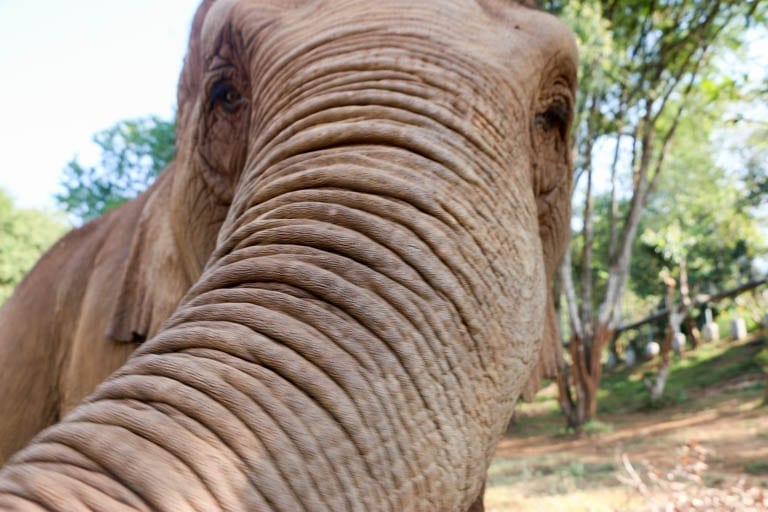
It was hard to hear about the cycle of abuse that the elephants at the Elephant Nature Park had endured. Especially since we were getting to know the elephants, gently stroking the trunks of the elephants who chose to visit with us.
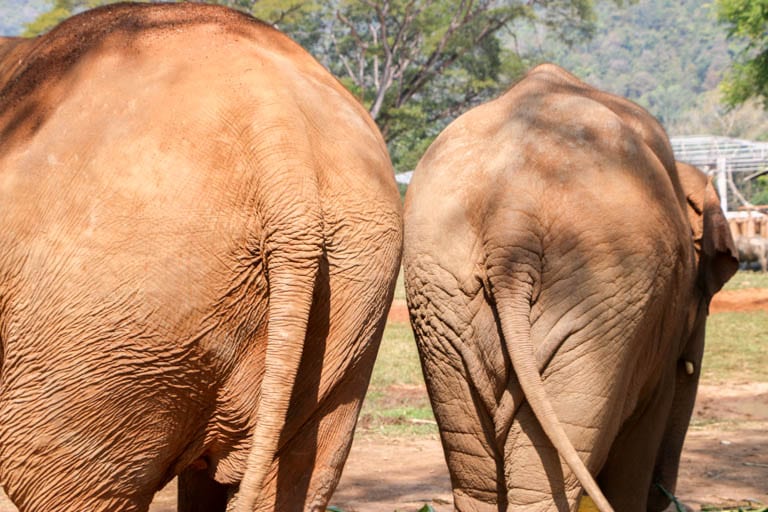
The elephants here are treated with care and love. But they are surrounded by places that keep elephants for tourists and these intuitive animals can smell the fear of their fellow captive elephants.
Once, our guide explained, one of the elephants nearby escaped from its captivity, and the elephants at the Elephant Nature Park placed the escapee inside a protective circle, attempting to shield it from the handlers who came to claim their property.
“We had to give the elephant back,” our guide said with genuine sadness.
Why I think this is the Best Elephant Sanctuary in Thailand
Our group had the powerful experience of witnessing the circle of life at the Elephant Nature Park.
Fact: The Elephant Nature Park also rescues dogs. We were allowed to take the stray and injured dogs on walks!
On our second trip around the park, as we got to know the names of the elephants, we noticed that the same pairs or clusters of elephants were still standing together.
Our guide explained that elephants form very strong bonds with one another. A fact that makes the separation of baby elephants from their mothers even harder to absorb.

We met two elephants who were very close friends, and our guide explained that Lucky served as the constant emotional support for BuaLoy, an elephant who was sick from kidney failure, while BuaLoy served as the eyes for Lucky, who was blind.
As the sun was setting on our last guided walk around the park, BuaLoy did what elephants don’t do until the very end of their lives. She laid down. BuaLoy chose her final resting place and, even though the volunteers and trainers knew she was sick, it was an extremely hard moment for the park as everyone stopped to sit with her.
Nearby, Lucky stood stoically, waving her head back and forth in a sign of distress.
It was hard, but it was beautiful.
This was an elephant who had known only abuse for most of her life. Injured while working in the logging industry, then forced into street begging, and then chained up for three months in a forced breeding program, BuaLoy finally found love and companionship when she came to the Elephant Nature Park.
BuaLoy got to choose her resting place; she died on her own terms.
Humans also find sanctuary here
That night, our group talked about how we discovered the Elephant Nature Park and the life circumstances that brought us to Thailand.

Over rum and the famous Thai beer, Chang, which, according to urban legend varies in alcohol content from batch to batch, we laughed and told stories that were interrupted by the occasional sound of an elephant trumpeting.
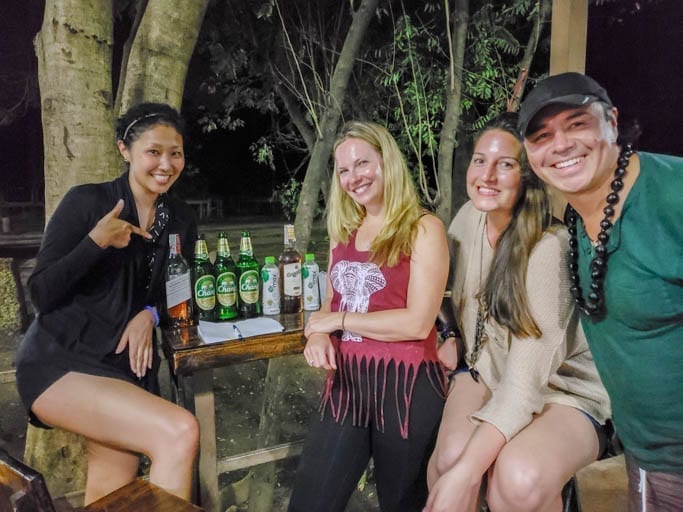
For one reason or another, each of us had learned that life changes on a dime – a knowledge that was the foundation for the separate decisions that had brought us all to the very same place that night.
As an impromptu dance lesson in swing and salsa spread across the deck, I propped myself against the platform railing and thought about what had brought me to Thailand and to this ethical elephant sanctuary.
Staring into the darkness that shielded the dying elephant, BuaLoy, from my view, I considered how my fiancé, Jeff, was also surrounded by love as he was dying of cancer.
Standing there listening to the trumpet of elephants and the laughter of new friends, I allowed myself to look beyond the pain that came from his death and to focus on the love that came from his life.
Saying goodbye at the best elephant sanctuary in Thailand
The next morning, we were invited to join in a ceremony to send BuaLoy on her next spiritual journey.
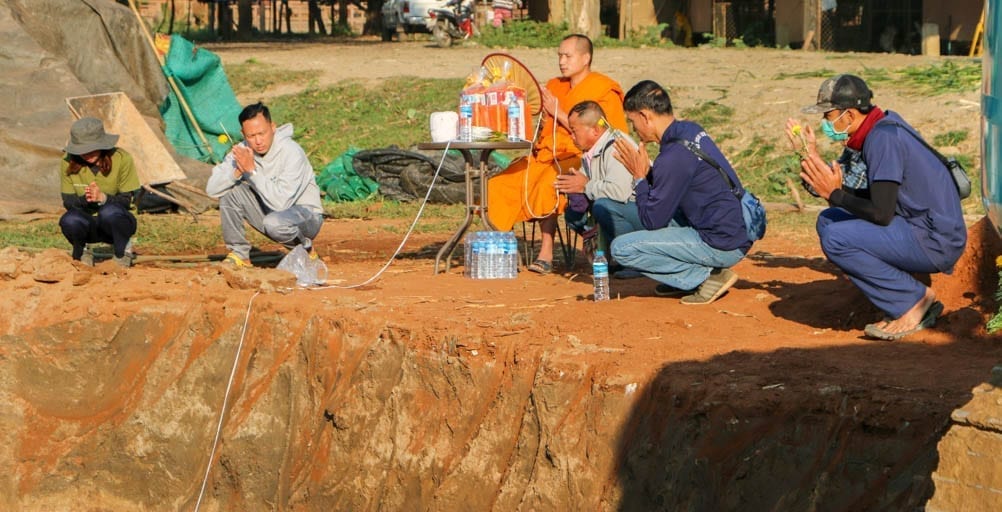
Volunteers, handlers, and overnight guests stood in a ring around the giant grave that was dug in the precise place where she chose to die. We tossed flowers and blessings on her, and shed tears on the ground that had offered her a safe place to spend her final years.
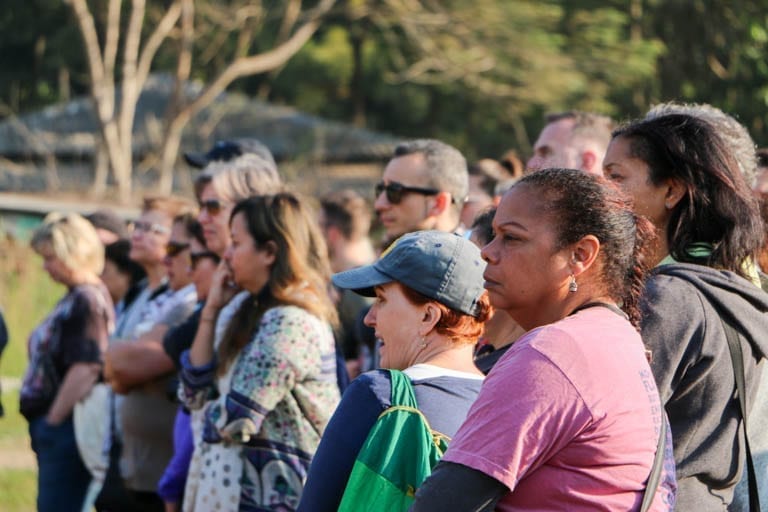
My tears were shed not just for Bualoy, but for Lucky, who we could see standing in a holding area near the gravesite, waving her head back and forth.
I understood her pain.
But, as I stood close to my new friends and acknowledged the circle of life, I felt confident that Lucky would find her way.
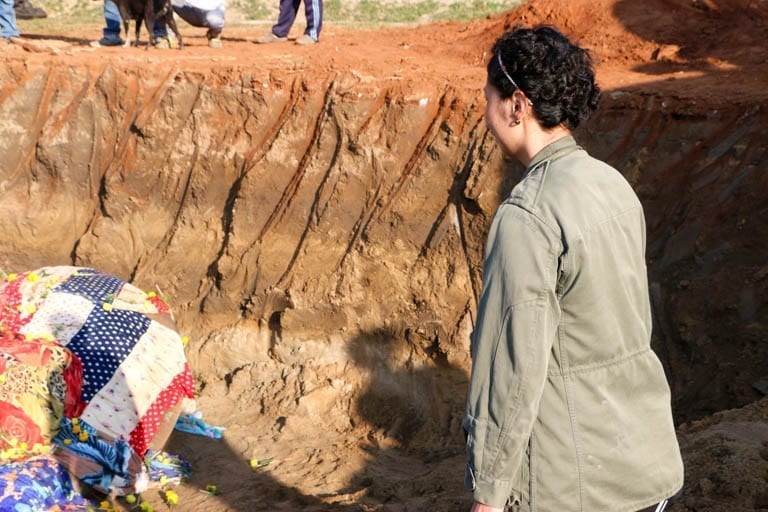
And before long, it was time for us to say our goodbyes as well. With hugs and promises to stay in touch, we continued on our respective journeys with the knowledge that we would never forget our time together – or with the elephants.

How to visit elephants ethically in Thailand
Quick Tips
- Do your research. Find ethical elephant sanctuaries that are in the business of saving elephants rather than profiting off of them. Responsible Travel has a list of ethical elephant sanctuaries here. (This list includes elephant sanctuaries worldwide. I made a map of their list of ethical elephant sanctuaries in Thailand. See below.)
- Never ride an elephant.
- It’s best not to bathe with elephants, either. Most ethical elephant sanctuaries have a no-bathing policy. These sanctuaries seek to provide an environment as natural for an elephant as possible. While elephants naturally enjoy bathing, they don’t generally do this with humans.
- Be very wary of the abundant pamphlets and signs advertising “no ride” parks. Many unethical parks have caught on to the fact that conscious tourists are looking for ethical sanctuaries, and they may use the words “no ride” or “sanctuary” without, in fact, being a safe place for the elephants. Do your research!
- Consider staying overnight or even volunteering at the Elephant Nature Park. This experience is one I will never forget.
- Forgive yourself if you previously rode or washed an elephant. Most tourists do not know about the widespread cruelty that abounds in the elephant tourism industry. But please help spread the word about the ethical elephant sanctuaries now that you know!
Ethical elephant sanctuaries in Thailand (map)
Where to ethically donate to elephant sanctuaries
Elephant tourism is integral to life in Asia because it is integral to the livelihood of many people in Asia. For survival. When tourism halted due to COVID-19, elephants suffered. There are many in danger of starvation.
About the Author
Hi! I’m Jen!
I’m a freelance writer and travel blogger who quit my nine-to-five after my fiancé, Jeff, died of cancer at the age of 40. When he died, I realized that life is just too short to delay our dreams. Since my dream was to travel and write, I now travel and write full-time. Today I wear hiking boots instead of heels and collect experiences instead of things.
You might also like
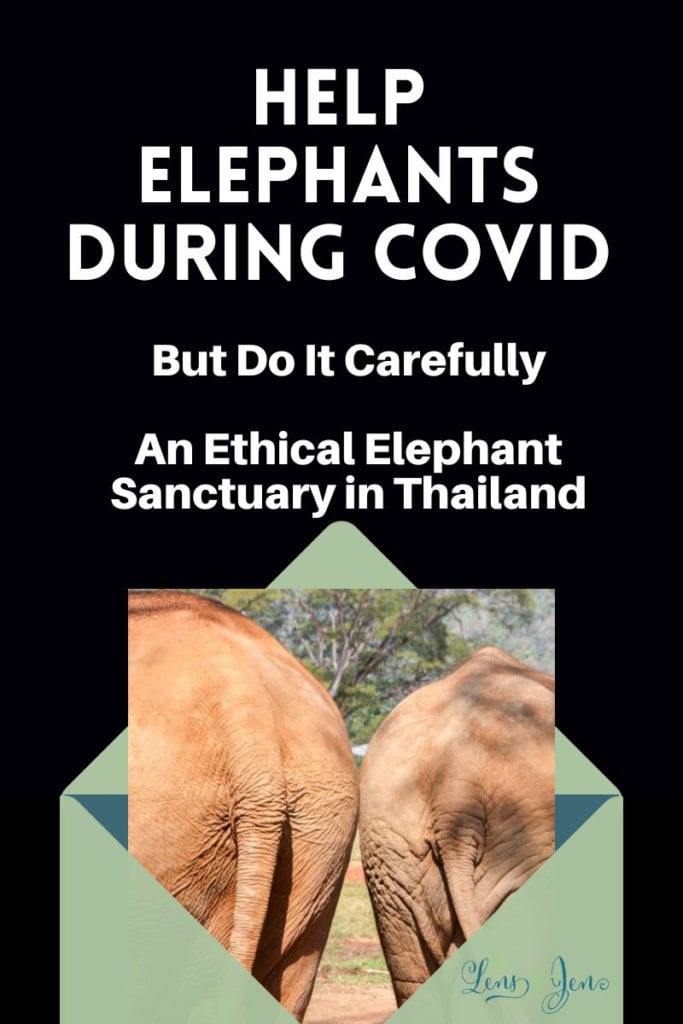



This is such a worthy cause! I love elephants and we need to make sure they are well taken care of and thrive. Thanks for sharing!
Oh, they are the sweetest things, aren’t they? So like humans. Thank you for reading!
I especially like this entry. Having such vivid descriptions of your experiences keep you close.
Thank you! After receiving a few questions about whether it’s OK to ride elephants, I added in a bit more about what landed BuaLoy in a situation where she needed to be rescued – and made it a bit more clear that it’s important to research the right/ethical elephant sanctuaries. Every little bit of getting the word out helps these beautiful creatures. Thanks for reading!